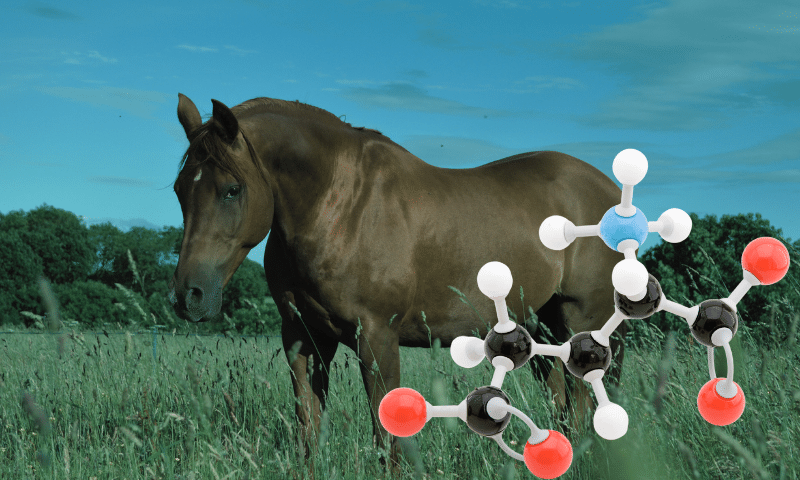There are two new drugs which are transforming the landscape of the treatment of equine metabolic syndrome in horses. These innovative drugs are looking like the best medication for EMS, especially in an emergency situation where insulin dysregulation makes insulin levels difficult to control and laminitis may strike.
In this article Dr Kellon VMD discusses EMS and the success and use, of the best new medicines in controlling laminitis in horses, caused by EMS.
What is the best medication for EMS in horses?
Canagliflozin (Invokana®) and ertugliflozin (Steglatro®) are new medications for EMS and the latest weapons in the war against difficult-to-control equine metabolic syndrome. They can be dramatically successful but there are special precautions which are often not followed.
These medications should be used when other management practices are not resulting in a decrease in insulin concentrations to safe levels. You can read more about endocrinopthic laminitis and management control here.
What is Equine Metabolic Syndrome?
Equine metabolic syndrome (EMS) is a constellation of laboratory findings and clinical signs with high blood insulin (hyperinsulinemia) at its core.
The high insulin levels are related to insulin resistance, where insulin-sensitive cells do not respond to insulin by taking up glucose normally, leading to elevated blood glucose concentration. As a result, insulin has to be higher than normal to control glucose.
What happens when a horse has high insulin?
The most serious consequence of high insulin is laminitis. It is now known that approximately 90% of laminitis cases are caused by high insulin. The mechanism is not completely understood but we do know that high insulin causes high levels of endothelin-1 which reduces blood flow to the hoof.
Other consequences include easy weight gain although not all horses with EMS are overweight or obese. They do all have some degree of a fatty crest sitting on top of the nuchal ligament of the neck and may have unusual fat pads at the tail base, around the withers and virtually anywhere. There have been changes in circulating fats demonstrated but these are usually minor. Blood pressure elevations have also been found.
What is leptin resistance in horses?
Horses with EMS become leptin-resistant as well as insulin-resistant, making it challenging to decrease body weight. Leptin is a hormone secreted by fat cells which normally tells the horse to stop eating, but that off switch is lost when they are resistant to the leptin.
How is adiponectin connected to EMS?
When another fat-derived hormone, adiponectin, is low, this indicates insulin resistance and EMS. Adiponectin helps regulate fat-burning and glucose production by the liver. Adiponectin can be measured through a simple blood sample to indicate if a horse might be at risk of developing laminitis.

What is the new medication for EMS in horses?
Invokana® (canagliflozin) and Steglatro® (ertugliflozin) are prescription medications for EMS. They are in the drug class SGLT2 inhibitors – SGLT2i’s. SGLT2 is the sodium-glucose transporter 2, one of a family of cellular transporters which absorb sodium and glucose.
SGLT2 is primarily located in the kidney and is responsible for reabsorbing glucose that is filtered out of the blood in the process of making urine. Normal urine does not contain any glucose. By blocking glucose uptake back into the blood, the burden on the pancreas to produce more insulin is reduced.
Invokana® and Steglatro® look like effective medications for EMS in horses and ponies as described in these research papers:
……… once daily administration of the SGLT2 inhibitor canagliflozin corrected hyperglycemia, reduced insulin to normal or near normal levels, and was 100% effective in reversing or reducing abnormal fat pads and eliminating laminitis pain in horses with refractory hyperinsulinemia and laminitis. There were no drug refusals. The expected polyuria was noted, which was mild. Despite its effectiveness, increases in insulin were observed when concomitant PPID was not controlled or diet was liberalized. It is recommended that the core aspects of therapy–diet control, exercise when possible and adequate treatment of PPID– must also be maintained if using canagliflozin. Furthermore, since these modalities are often successful themselves, canagliflozin should be reserved for refractory cases. Further controlled trials to investigate canagliflozin pharmacokinetics, pharmacodynamics, efficacy, safety, and long-term use in horses are needed.
Use of the SGLT2 inhibitor canagliflozin for control of refractory equine hyperinsulinemia and laminitis – Kellon & Gustafson 2022
After 30 days of treatment with ertugliflozin, there was a reduction in insulin concentrations from a median of >300 μu/ml (IQR: 149, >300) to 43 μu/ml (IQR: 20, 66) (p < 0.001). Modified Obel laminitis scores improved, reducing from a median of 10/12 to 1/12 (p < 0.001). Median serum triglyceride concentrations increased from 0.6 (IQR: 0.4, 0.9) before treatment to 1.4 (IQR: 0.8, 3.7) mmol/L after 30 days of treatment (p < 0.001) before declining, however, none of the horses developed any clinical signs of hyperlipaemia. Ten horses (19%) were reported to have polyuria and polydipsia during treatment, otherwise no adverse clinical effects were identified.
Preliminary observations on the use of ertugliflozin in the management of hyperinsulinaemia and laminitis in 51 horses: A case series – Sundra Kelty & Rendle 2022
What does the medication Invokana® and Steglatro® do for EMS horses?
In humans, these drugs are documented to also have anti-inflammatory and antioxidant effects. They improve the risk for complications of type II diabetes including fatty liver, coronary disease, renal disease and ocular involvement.
Elevated insulin is at the core of metabolic syndrome and is the cause of the laminitis many horses with equine metabolic syndrome suffer from. This new medication for EMS can cause a rapid reduction in insulin, increase insulin sensitivity, and provide relief of laminitis pain.
There are even horses who have had relief from laminitis pain without dramatic drops in their insulin. This new medication for EMS may well be among the best choices for horses and ponies.
Are there side effects with Invokana® and Steglatro®?
The most common side effect in other species, particularly humans, is urinary tract infections. These occur because the high glucose in the urine is feeding bacteria in the urinary tract. This has not been a problem to date with horses but it’s a good idea to observe your horse carefully for signs of urinary tract infection.
Signs of a urine infection include passing only small amounts of urine, dribbling urine and frequently positioning themselves to urinate then stopping after passing only a small amount. There may be a high temperature. Call your veterinarian if you suspect a urinary tract infection.
Some people on SGLT2is have developed increased BUN and creatinine indicating reduced kidney function. This is likely due to dehydration. Dehydration develops easily because the volume of urine is increased when glucose is in the urine.
Are there other drugs to be avoided when using new medication for EMS?
Research has shown that concurrent use of NSAID drugs – nonsteroidal anti-inflammatories like phenylbutazone, flunixin, aspirin, firocoxib and others – increases the risk of impaired kidney function.
Horses taking SGLT2i drugs should have plentiful water and a guaranteed intake of at least 30 grams of salt per 500 kg body weight in cool weather and 60 plus grams in hot weather. NSAIDs should be used very judiciously, if at all.

Does the new medication for EMS have any complications?
A completely unexpected complication in horses, using the new medication for EMS, is the development of hypertriglyceridemia. There will sometimes be elevated cholesterol as well, and sometimes liver enzyme elevations.
It is wise to carry out a baseline blood test to check kidney function and triglycerides before starting this new medication for EMS. It is also important to monitor liver enzymes, kidney function and triglycerides after 4 weeks, or if rapid weight loss is noted.
Hypertriglyceridemia in horses was unexpected because in humans these drugs actually improve triglycerides and fatty liver.
Triglycerides are a combination of:
- Three fatty acids (i.e. saturated fat, unsaturated fat or both – these are the building blocks of fats)
- Glycerol – a form of glucose (a simple sugar).
Release of triglycerides is a normal physiological response to exercise, fasting or inadequate calorie intake. Triglycerides are a vital energy source for cells.
The high triglycerides seen in horses on SGLT2i are different from the hyperlipemia syndrome seen in miniatures, donkeys and ponies in that these horses do not lose their appetite and remain alert, but accelerated weight loss may be noticed.
Members of the Equine Cushings and Insulin Resistance Group have not observed any increased problems with high triglycerides or hyperlipemia syndrome in ponies, minis or donkeys. This problem has only been seen in horses on this new medication for EMS.
The main difference between humans and horses is that diabetic humans have a much higher intake of carbohydrates than EMS horses, at least three times higher.
What should I do if there is rapid weight loss on these medications?
The rapid weight loss in horses using this medication for EMS may cause owners to up the calories through a concentrated calorie source such as cereals or a concentrated high-energy compound feed. This is to be avoided. You can’t just start feeding cereals or a concentrate bucket feed to correct the situation or insulin will shoot up.
A horse with high triglycerides due to new medication for EMS should be managed by feeding free choice hay with (simple sugars) ESC + starch ideally at 10 to 12% and protein at 10+%. It is best to test the hay to check the protein, ESC and starch levels. Finding this type of hay in the UK with a high protein level can be hard, so a protein supplement may be needed.
To increase calories safely, use 500 grams to 1 kg of unmolassed beet pulp per day. If this doesn’t correct liver enzyme elevations, add 50 to 100 grams of glycine to support the synthesis of glucose in the liver (gluconeogenesis). Many other amino acids also support gluconeogenesis but this is the most palatable.
Make sure minerals and vitamins are balanced to the hay eaten so that nutrition is well optimised for the greatest impact.
Triglycerides may remain elevated but if liver enzymes normalize and the horse is asymptomatic, that is acceptable.
Summary
- Check kidney function and triglycerides before starting these drugs to have a baseline. Mild triglyceride elevations are not a contraindication
- Observe for signs of urinary tract infections
- Observe for rapid weight loss
- Guarantee adequate salt intake and keep water available for free-choice
- Liberalize the diet to include free-choice hay, beet pulp and glucogenic amino acids if needed
- Make sure balanced minerals, vitamins and protein are matched to the hay fed to optimise the nutrition as matched to the greatest proportion of the diet.
- Recheck kidney function and triglycerides 4 weeks after starting the drugs or sooner if rapid weight loss is seen
Further references
https://www.ncbi.nlm.nih.gov/pmc/articles/PMC10072834/
Unsure what to feed?
Receive a bespoke feed plan for your horse from one of our equine nutritionists.






